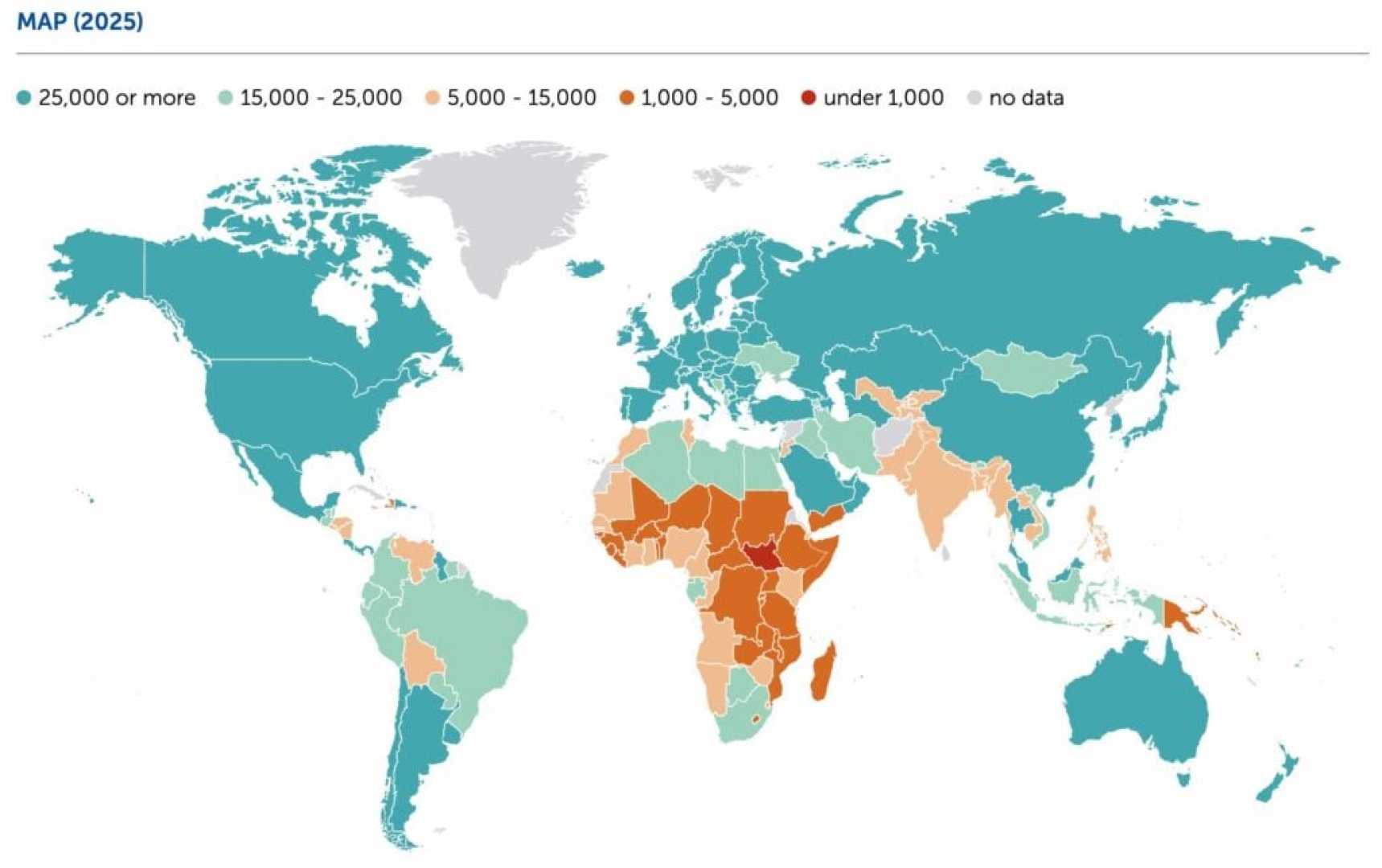Business
Exploring the World’s Richest Nations by GDP Per Capita in 2025

WASHINGTON, D.C. — The International Monetary Fund (IMF) has released its projections for global GDP per capita in purchasing power parity (PPP) for 2025, revealing insights into the world’s wealthiest nations. Leading the list is Luxembourg, boasting a GDP per capita of $154,914, followed closely by Singapore at $153,608 and Ireland at $131,548.
These figures underscore not only the economic output of these countries but also their effective management of resources and living costs. Luxembourg’s financial sector plays a pivotal role in achieving its standing, distinguished by a long history of banking and finance. In contrast, Singapore has transformed from a low-income economy to a high-income powerhouse through strategic investments in various sectors.
One of the distinctive features of Luxembourg is its high concentration of international banks and investment firms, which contribute significantly to its economy. “The financial sector provides stability and attracts a skilled workforce, further enhancing our economic prosperity,” said Henri Boucher, chief economist at the Luxembourg Central Bank.
Singapore’s success is attributed to its proactive governance and emphasis on sustainability. The government’s “Singapore Green Plan 2030” aims to achieve net-zero emissions by 2050. According to Richard Tan, a local economist, “Our continual investment in infrastructure and education has solidified our position as a regional financial hub.” In 2023, Singapore experienced a growth rate of 1.1%, driven primarily by construction and services.
Conversely, Ireland’s remarkable rise in wealth is known as the “Celtic Tiger” period. From 1995 to 2007, the nation underwent transformative economic growth fueled by low corporate taxes and foreign investments. “Our EU membership and favorable tax rates have made Ireland an attractive place for multinational corporations,” noted Fiona O’Rourke, a spokesperson for the country’s economic development agency.
Qatar follows Ireland with a GDP per capita of $118,761, largely driven by its vast natural gas and petroleum reserves. This small nation has made significant strides in diversifying its economy under the Qatar National Vision 2030. Ahmed Al-Rashid, an economist in Doha, remarked, “While we rely heavily on oil and gas, we are committed to promoting sectors like education and healthcare to ensure sustainable growth.”
Norway, with its combination of robust welfare systems and significant oil reserves, follows closely at $106,540. “Our management of oil revenues through sovereign wealth funds has provided us a safety net for future generations,” stated Lars Jenson, a financial analyst based in Oslo.
Switzerland is another key player, holding a GDP per capita of $98,145. Historical strengths in industries such as pharmaceuticals and precision machinery have positioned Switzerland among the wealthiest while maintaining political neutrality. “Swiss banks attract international clients, creating a foundation of financial stability,” mentioned Emma Gruber, an analyst from Zurich.
Brunei, with a GDP of $95,039, leverages its oil exports but also faces challenges related to economic diversification efforts. Meanwhile, Guyana, which has experienced rapid growth due to newly discovered oil reserves, recognizes the challenges of managing such newfound wealth, underscoring critical infrastructure needs as it aims for sustainable economic development.
The United States continues its strong presence globally, ranking ninth at $89,678, primarily supported by its expansive service sector. “The U.S. economy thrives on innovation and technology, positioning it as a leader across various industries,” noted Jennifer Kim, an economic advisor based in New York City.
Denmark rounds out the top ten with a GDP per capita of $85,790, exemplifying the Nordic model of high taxes paired with extensive social benefits. “Our focus on sustainability and renewable energy has propelled our economic framework,” stated Anders Nielsen, an analyst from Copenhagen.
The data illustrates how diverse economic structures and policies contribute to national wealth. By understanding these dynamics, nations can draw lessons to enhance their growth trajectories, promoting not only wealth accumulation but improving residents’ quality of life.












